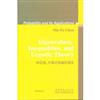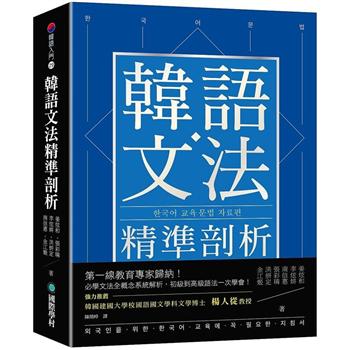| FindBook |
|
有 1 項符合
陳木法的圖書 |
 |
$ 238 | 特徵值.不等式和遍歷理論-(影印版)
作者:陳木法 出版社:世界圖書出版公司 出版日期:2013-01-01 語言:簡體書  看圖書介紹 看圖書介紹
|
|
|
圖書介紹 - 資料來源:博客來 評分:
圖書名稱:特征值,不等式和遍歷理論(英文)
內容簡介
詳細講述了應用廣泛眾多讀者感興趣的問題———矩陣的譜隙和微分算子,提供了描述相變換和隨機算術效應的工具。每章以綜述開始,為了吸引更多的非專業人士,通過簡單例子引入觀點而不是技巧證明。后面的一些章節很自然地將讀者引入這個領域的問題和應用中,如經濟的隨機模型等。
目錄
Preface
Acknowledgments
Chapter 1 An Overview of the Book
1.1 Introduction
1.2 New variational formula for the first eigenvalue
1.3 Basic inequalities and new forms of Cheeger’’s constants
1.4 A new picture of ergodic theory and explicit criteria
Chapter 2 Optimal Markovian Couplings
2.1 Couplings and Markovian couplings
2.2 Optimality with respect to distances
2.3 Optimality with respect to closed functions
2.4 Applications of coupling methods
Chapter 3 New Variational Formulas for the First Eigenvalue
3.1 Background
3.2 Partial proof in the discrete case
3.3 The three steps of the proof in the geometric case
3,4 Two difficulties
3.5 The final step of the proof of the formula
3.6 Comments on different methods
3.7 Proof in the discrete case (continued)
3.8 The first Dirichlet eigenvalue
Chapter 4 Generalized Cheeger’’s Method
4.1 Cheeger’’s method
4.2 A generalization
4.3 New results
4.4 Splitting technique and existence criterion
4.5 Proof of Theorem 4.4
4.6 Logarithmic Sobolev inequality
4.7 Upper bounds
4.8 Nash inequality
4.9 Birth-death processes
Chapter 5 Ten Explicit Criteria in Dimension One
5.1 Three traditional types of ergodicity
5.2 The first (nontrivial) eigenvalue (spectral gap)
5.3 The first eigenvalues and exponentially ergodic rate
5.4 Explicit criteria
5.5 Exponential ergodicity for single birth processes
5.6 Strong ergodicity
Chapter 6 Poincar-Type Inequalities in Dimension One
6.1 Introduction
6.2 Ordinary Poincar inequalities
6.3 Extension: normed linear spaces
6.4 Neumann case: Orlicz spaces
6.5 Nash inequality and Sobolev-type inequality
6.6 Logarithmic Sobolev inequality
6.7 Partial proofs of Theorem 6.1
Chapter 7 Functional Inequalities
7.1 Statement of results
7.2 Sketch of the proofs
7.3 Comparison with Cheeger’’s method
7.4 General convergence speed
7.5 Two functional inequalities
7.6 Algebraic convergence
7.7 General (irreversible) case
Chapter 8 A Diagram of Nine Types of Ergodicity
8.1 Statements of results
8.2 Applications and comments
8.3 Proof of Theorem 1.9
Chapter 9 Reactlon-Diffusion Processes
9.1 The models
9.2 Finite-dimensional case
9.3 Construction of the processes
9.4 Ergodicity and phase transitions
9.5 Hydrodynamic limits
Chapter 10 Stochastic Models of Economic Optimization
10.1 Input-output method
10.2 L.K. Hua’’s fundamental theorem
10.3 Stochastic model without consumption
10.4 Stochastic model with consumption
10.5 Proof of Theorem 10.4
Appendix A Some Elementary Lemmas
Appendix B Examples of the Ising Model on Two to Four Sites
B.1 The model
B.2 Distance based on symmetry: two sites
B.3 Reduction: three sites
B.4 Modification: four sites
References
Author Index
Subject Index
Acknowledgments
Chapter 1 An Overview of the Book
1.1 Introduction
1.2 New variational formula for the first eigenvalue
1.3 Basic inequalities and new forms of Cheeger’’s constants
1.4 A new picture of ergodic theory and explicit criteria
Chapter 2 Optimal Markovian Couplings
2.1 Couplings and Markovian couplings
2.2 Optimality with respect to distances
2.3 Optimality with respect to closed functions
2.4 Applications of coupling methods
Chapter 3 New Variational Formulas for the First Eigenvalue
3.1 Background
3.2 Partial proof in the discrete case
3.3 The three steps of the proof in the geometric case
3,4 Two difficulties
3.5 The final step of the proof of the formula
3.6 Comments on different methods
3.7 Proof in the discrete case (continued)
3.8 The first Dirichlet eigenvalue
Chapter 4 Generalized Cheeger’’s Method
4.1 Cheeger’’s method
4.2 A generalization
4.3 New results
4.4 Splitting technique and existence criterion
4.5 Proof of Theorem 4.4
4.6 Logarithmic Sobolev inequality
4.7 Upper bounds
4.8 Nash inequality
4.9 Birth-death processes
Chapter 5 Ten Explicit Criteria in Dimension One
5.1 Three traditional types of ergodicity
5.2 The first (nontrivial) eigenvalue (spectral gap)
5.3 The first eigenvalues and exponentially ergodic rate
5.4 Explicit criteria
5.5 Exponential ergodicity for single birth processes
5.6 Strong ergodicity
Chapter 6 Poincar-Type Inequalities in Dimension One
6.1 Introduction
6.2 Ordinary Poincar inequalities
6.3 Extension: normed linear spaces
6.4 Neumann case: Orlicz spaces
6.5 Nash inequality and Sobolev-type inequality
6.6 Logarithmic Sobolev inequality
6.7 Partial proofs of Theorem 6.1
Chapter 7 Functional Inequalities
7.1 Statement of results
7.2 Sketch of the proofs
7.3 Comparison with Cheeger’’s method
7.4 General convergence speed
7.5 Two functional inequalities
7.6 Algebraic convergence
7.7 General (irreversible) case
Chapter 8 A Diagram of Nine Types of Ergodicity
8.1 Statements of results
8.2 Applications and comments
8.3 Proof of Theorem 1.9
Chapter 9 Reactlon-Diffusion Processes
9.1 The models
9.2 Finite-dimensional case
9.3 Construction of the processes
9.4 Ergodicity and phase transitions
9.5 Hydrodynamic limits
Chapter 10 Stochastic Models of Economic Optimization
10.1 Input-output method
10.2 L.K. Hua’’s fundamental theorem
10.3 Stochastic model without consumption
10.4 Stochastic model with consumption
10.5 Proof of Theorem 10.4
Appendix A Some Elementary Lemmas
Appendix B Examples of the Ising Model on Two to Four Sites
B.1 The model
B.2 Distance based on symmetry: two sites
B.3 Reduction: three sites
B.4 Modification: four sites
References
Author Index
Subject Index
|










